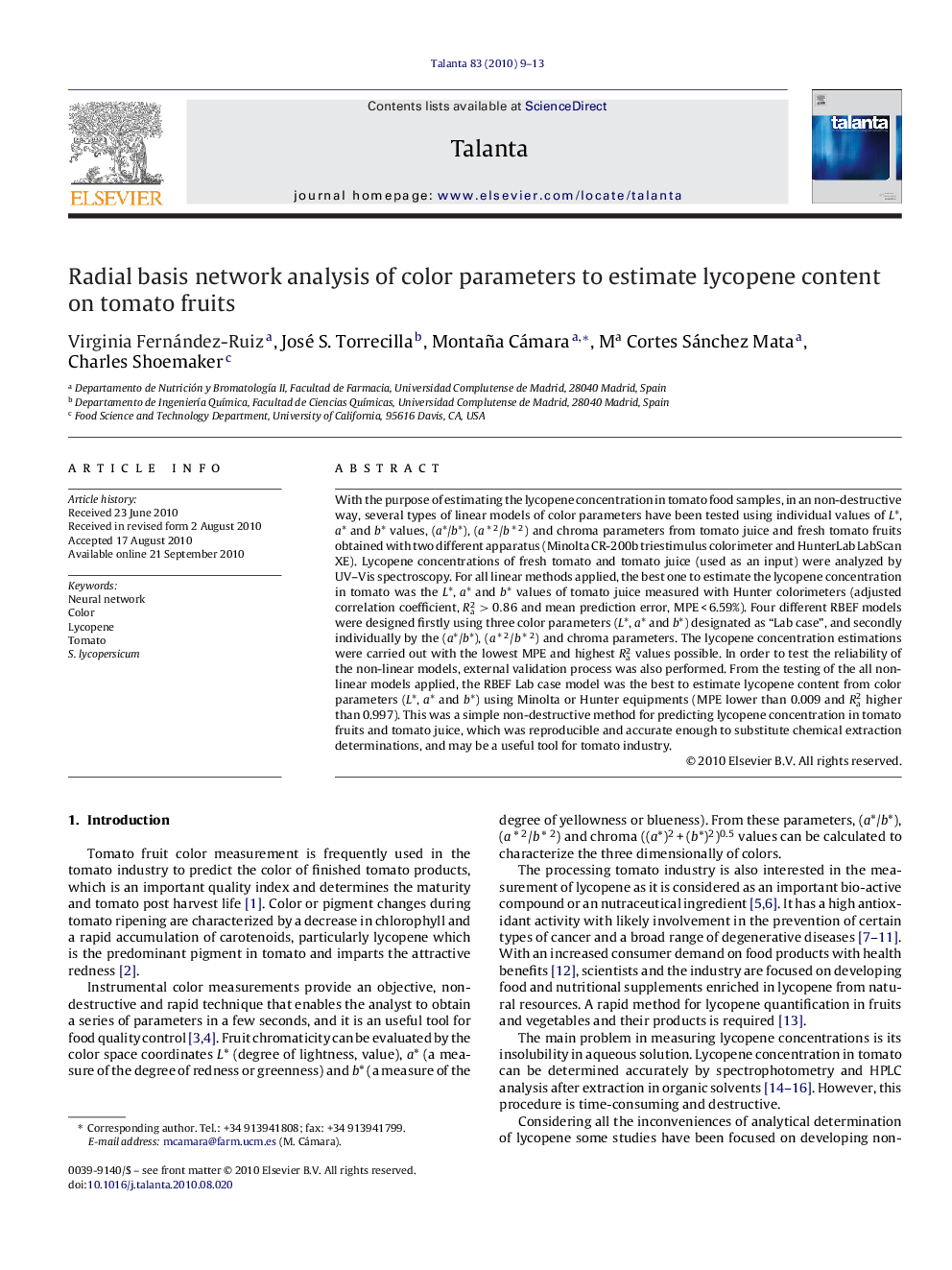| Article ID | Journal | Published Year | Pages | File Type |
|---|---|---|---|---|
| 1242453 | Talanta | 2010 | 5 Pages |
With the purpose of estimating the lycopene concentration in tomato food samples, in an non-destructive way, several types of linear models of color parameters have been tested using individual values of L*, a* and b* values, (a*/b*), (a * 2/b * 2) and chroma parameters from tomato juice and fresh tomato fruits obtained with two different apparatus (Minolta CR-200b triestimulus colorimeter and HunterLab LabScan XE). Lycopene concentrations of fresh tomato and tomato juice (used as an input) were analyzed by UV–Vis spectroscopy. For all linear methods applied, the best one to estimate the lycopene concentration in tomato was the L*, a* and b * values of tomato juice measured with Hunter colorimeters (adjusted correlation coefficient, Ra2>0.86 and mean prediction error, MPE < 6.59%). Four different RBEF models were designed firstly using three color parameters (L*, a* and b*) designated as “Lab case”, and secondly individually by the (a*/b*), (a * 2/b * 2) and chroma parameters. The lycopene concentration estimations were carried out with the lowest MPE and highest Ra2 values possible. In order to test the reliability of the non-linear models, external validation process was also performed. From the testing of the all non-linear models applied, the RBEF Lab case model was the best to estimate lycopene content from color parameters (L*, a* and b *) using Minolta or Hunter equipments (MPE lower than 0.009 and Ra2 higher than 0.997). This was a simple non-destructive method for predicting lycopene concentration in tomato fruits and tomato juice, which was reproducible and accurate enough to substitute chemical extraction determinations, and may be a useful tool for tomato industry.
